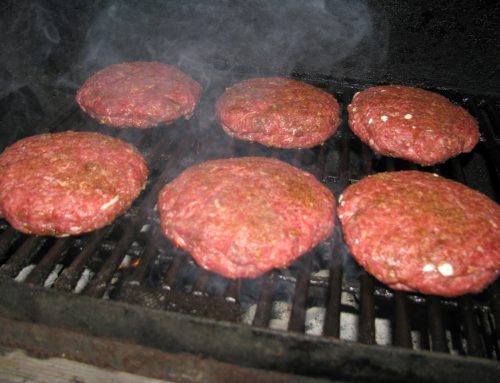By Amanda Hill
Did you hear? It’s true—the domestic queen herself, Martha Stewart, says she spent her Thanksgiving holiday recovering from salmonella poisoning after handling too many raw birds. Proof that no one is perfect when it comes to food safety during the holidays.
The holidays can be a hectic time, but it’s worth taking a few extra minutes to ensure your kitchen and meal preparations are bacteria-free. You want to enjoy the meal gathered around the table with family—not sick in bed.
The good news is, holiday food safety is easy. Just follow these tips from www.holidayfoodsafety.org:
- Remember the basics of food safety—clean, separate, cook and chill.
- Clean all kitchen items thoroughly before use.
- Wash your hands before and after handling raw food, especially between preparing meat and vegetables. Wash for at least 20 seconds with soap and warm water.
- Use separate cutting boards for meat and vegetables. (You can even buy color-coded boards to keep them straight!)
- Refrigerate leftovers within two hours of serving. And, throw out uneaten food within three to four days after refrigeration. No slimy leftovers here!
If you haven’t already, check out the Holiday Food Safety website. The site has tons of great information about food safety, but it also features holiday cooking tips, menu ideas, recipes, shopping lists, food storage labels and more.
Let’s face it—we have all wished we could play hostess like Martha. In this case, though, follow these few easy steps in the kitchen. Your turkey and dressing may not be picture perfect, but it will be safe for you and your guests!











Also, keep in mind minimum safe temperatures for various types of foods. Poultry has a minimum safe temperature of 165. A good instant read meat thermometer will help remove all doubt. Also keep in mind that the temp. will be higher by the bone, so take your readings in the middle of the thickest muscle. Be safe, everyone!
Coleburn, you’re absolutely right. You can find more information on safe food temperatures here: http://www.fsis.usda.gov/FACTSheets/Keep_Food_Safe_Food_Safety_Basics/index.asp. Thanks for your comment!
Remember too that there are different kinds of food pathogens. If I remember my days in poultry and dairy science at Texas A&M(dairy because that’s where they taught the food microbiology courses)Salmonella produces a toxin…meaning that cooking will kill the organism by not the toxins already present. With Salmonella, the answer is to keep the product cold and to wash your hands, EVERY TIME, you touch something else in the kitchen – or go to the toilet – before you touch the raw product again. Other types of food poisoning like the dangerous E-coli, are active infections, meaning they will be killed AND rendered harmless by proper cooking. All of the products are safe as long as we remember the rules and procedures.
A great point, Gene. That goes back to the tips in the blog. Wash your hands frequently, especially when handling meat. Happy (and safe) holiday cooking, everyone!